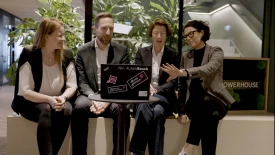Our Approach to Agile at Scale
10%-20%
increase in customer satisfaction and return on digital investment
2x-4x
acceleration in time-to-market and new product delivery
15%-25%
reductions in development costs
90%+
employee engagement
Taking agile beyond pilots and scattered initiatives requires deep changes in processes, habits, and even mindsets. It also requires careful timing and coordination. We work with clients at every step of their agile-at-scale journey.
- Understand the starting point. Our customized approach starts with understanding where an organization is. Proprietary tools, such as our agile maturity assessment and Ready, Willing, Able (RWA) Tool, help us gauge capabilities, competencies, and willingness to change—and benchmark against best-in-class peers. By understanding a client's readiness for enterprise agility, we can shape recommendations and strategies to fit their unique environment.
- Enable the organization. Enterprise agility requires catalysts to change and influence behavior. We provide a suite of resources—and support—for all levels of an organization. These include workshops to teach agile behaviors, immersion sessions for senior executives, and coaching, simulations, and mentoring for agile team members. We also provide tactics for change management and communications.
- Set up and execute agile pilots. When well implemented, agile at scale generates not only value but also lessons that help scale this new way of working. We work with organizations to select visible and relevant pilots, establish agile processes, and measure results—building dashboards to track value delivery, squad performance, defects, and work progress.
- Adapt the operating model. By feeding learnings into the operating model, we fine-tune methodologies and set the stage for agile transformation. We define how roles and responsibilities will shift, drawing on a database of more than 3,000 role charters that detail accountabilities across functions. We address all components of the operating model, including governance, culture, leadership and talent, and technological enablers. We help embed the Unbroken Chain of Why, which ensures that every action taken is directly tied to strategic goals, creating a seamless link from vision to execution. And we work with clients to communicate changes—reducing ambiguity, and tension, as they deploy agile at scale.
- Build an agile playbook. Transforming to an agile organization won’t happen overnight. By building on initial projects, customizing best practices to a client’s context and culture, and enabling ongoing coaching, workshops, and pulse checks, we create a roadmap for enterprise agility—and a path for sustainable change.
Our Agile-at-Scale Consulting Work
Our agile-at-scale clients operate in nearly every industry and region. We’re able to assist such a diverse roster because of our global reach and cross-industry experience in enterprise agility. Among our engagements: agile transformation in banking, aviation, and pharmaceuticals. As the following examples show, agile at scale isn’t just for software—or isolated pilots—anymore.
Video
June 26, 2024
Bosch Digital reinvented ways of working and realigned talent to create a nimble operating model, meeting the demands of diverse projects and ever-evolving expectations.
Video
July 19, 2023
Ista CEO Hagen Lessing explains why he believes every company can benefit from adopting an agile-at-scale management system.
Video
August 3, 2022
How Citizens Is Competing—and Winning—Against Fintechs
Michael Ruttledge, CIO of Citizens, explains how a digital transformation has allowed the company to compete against fast-moving startups.
Our Insights on Agile at Scale

Article
October 3, 2024
For large organizations with mature agile frameworks, here is a highly effective business-driven development model for the next stage of the agile journey.

Article
May 8, 2024
BCG’s latest research reveals that only about half of the companies that claim high agile maturity have actually achieved their transformation goals and can point to real business impact.

Article
April 11, 2024
Implementing agile ways of working is relatively easy. Transforming the organization to ensure that agility takes hold is hard. Here’s how to do it.

Article
April 9, 2024
Across industries, the increasingly popular methodology known as Objectives and Key Results (OKR) has emerged as a go-to framework to significantly improve performance.
Video
February 24, 2021
Align, Iterate, and Grow with BCG’s Agile at Scale
Talent, teamwork, and creativity often smolder in rigid corporate structures and silos. Agile at scale by BCG ignites the spark of innovation at the heart of your organization.
Meet BCG’s Agile-at-Scale Consultants
Our agile-at-scale consultants and industry experts partner with clients to rethink their operating model and culture, and embrace an agile transformation.











